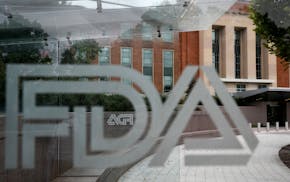Earl Bakken began his life in a modest home northeast of Minneapolis, but ended it in an elaborate compound on Hawaii's Big Island with its own ballroom dance floor, 150-watt propane-fired generators and a desalination plant for drinking water.
The Hawaii property at Kiholo Bay had 730 feet of beachfront at the end of a remote dirt road on Hawaii's Big Island. Before Bakken bought it, the site had no power, no fresh water supply, no hardline telephone connection.
"Well, my husband's an engineer," Doris Bakken remarked at the time, according to an account in the book of anecdotes about his life, "Dreaming On with Earl Bakken." "He can solve those problems."
(Colleagues from Medtronic who knew Bakken well noted that his propane-fired generators were eventually replaced with a large, state-of-the-art solar array, which is described more fully in this CNBC article).
Bakken spent many years with his life divided between Minnesota and Hawaii – an arrangement that eventually took its toll.
He once described a recurring a dream in which he was in a hotel going from floor to floor looking for his room, unable to find his car in the parking lot and having no money, and then going to the front desk of the hotel to frantically "beg for help."
Bakken told biographers that he went to see a friend-of-a-friend who worked with people and dreams:
"She said, 'You've had two previous lives where you were Hawaiian. … That's why you came back here.'" Bakken says in Dreaming On. "Now I haven't had that dream of being lost for a long time, because I think I have found where I want to be."
In 1989, at the age of 65, Bakken retired as senior chairman of the board and an officer of Medtronic, and set his sights west – far west.
Though he remained a member of the Medtronic board until his 70th birthday in 1994, he moved to the rustic Kiholo Bay in the early 1990s and quickly got involved in the local health care scene there. He described the April 1996 dedication of a new hospital in nearby Waimea, the North Hawaii Community Hospital, to be "a miracle" that had long been the goal of the local populace.
He would join the hospital's board and eventually serve as its president, to indulge in some ideas he'd been having about "holistic medicine" and a new way apply human-centric thinking to health care.
"While my life's work had been in the field of medical technology, and that while I strongly believed in and supported the use of the latest technology in medical treatment, there is a human side to healing that must be (but too often is not) considered," he wrote in his autobiography.
Earl Bakken, the postwar engineer who figured how to power the human heart with a battery, helping to launch a major U.S. industry, had begun to embrace very non-Western ideas about medicine and science.
"There is, after all, only one effective healing mechanism in the world," he wrote from Hawaii, "and that is the healing capability we have built into our bodies.
"It is a marvelous capability, but it has to be turned out and not suppressed. What we call integrated or complementary medicine refers to treatment methods that may not be amenable to double-blind studies and conventional statistical measurements, but do produce positive, long-term outcomes from the patient's point of view. We've done great harm, I'm afraid, by requiring medical care to conform to such standards."
USPS commits to rerouting Reno-area mail despite bipartisan pushback and mail ballot concerns

Senate passes bill forcing TikTok's parent company to sell or face ban, sends to Biden for signature

